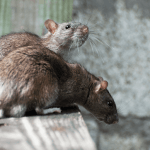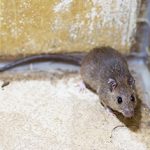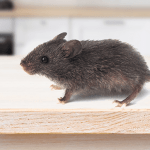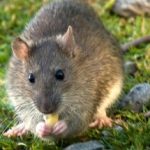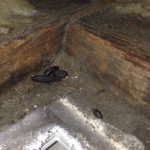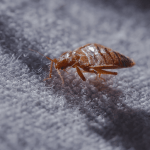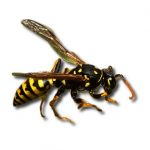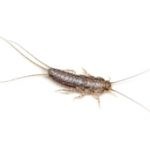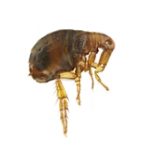Rats UK
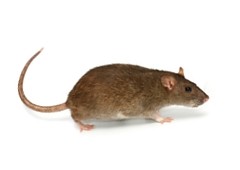
Rats are one of the most persistent and adaptable pests in the UK, thriving in both urban and rural areas. These intelligent rodents are known to scavenge, nest, and multiply rapidly, often causing significant damage to properties and posing serious health risks. Whether you’re a homeowner, tenant, or business owner, understanding how to spot the early signs of a rat infestation is key to preventing costly problems.
From chewing through insulation and wiring to contaminating food and spreading disease, rats can quickly become a serious nuisance. Learn how to identify, prevent, and control rats effectively – and when it’s time to call in professional pest control services for lasting results
Types of Rats Found in the UK
The most widespread rat species in the UK are the brown rat (Rattus norvegicus) and the black rat (Rattus rattus). While both are problematic pests, they differ in behaviour, habitat, and appearance. Recognising which type of rat is invading your property is essential for effective rat control and prevention.
Brown Rat (Norwegian Rat)
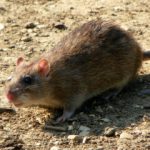
The brown rat, or Norwegian rat, is the most common rat species found in UK homes, commercial buildings, and outdoor spaces. It can grow up to 40 cm in length, with a thick, heavy body and a tail that is typically shorter than its head and body combined.
Brown rats are prolific breeders, producing 5 to 10 pups per litter, and can have 3 to 6 litters per year. With sexual maturity reached in just 10 weeks, infestations can escalate quickly if not addressed. These rats often nest in basements, sewers, and under floorboards. They are opportunistic feeders and consume a wide variety of foods, making them especially common in areas with accessible waste or poorly stored food.
Brown Rat Key Traits:
- Stocky body and blunt nose
- Short tail relative to body
- Excellent swimmers and burrowers
- Commonly found both indoors and outdoors
Image by: Peter O’Connor
Where are Brown Rats Most Commonly Found?
Despite its name, the Norway rat (or brown rat) does not originate from Norway. The species was already named Rattus norvegicus by the time it reached Scandinavia. According to scientists, the Norway rat originates from China or Eastern Mongolia. In the Middle Ages, it spread to other parts of the world, most likely through trade routes and merchant ships.
Today, the brown rat is one of the most widespread rodents on Earth, thriving in both urban and rural environments. From city sewers and subway tunnels to farmlands and residential lofts, this species has proven to be incredibly adaptable. Brown rats are found on every continent except Antarctica. In fact, Antarctica was declared rat-free in 2012, after a successful eradication program on Rat Island, where brown rats had arrived via a Japanese shipwreck.
Where Do Brown Rats Live in the UK?
In the UK, brown rats commonly inhabit:
- Sewers and drainage systems
- Basements and wall cavities
- Lofts and attics
- Gardens, compost heap, and sheds
- Farmland
- Commercial premises and food storage areas
Their strong burrowing and nesting instincts mean they often dig tunnels or live beneath floorboards and behind skirting boards. Their proximity to human activity ensures easy access to shelter, food, and water.
Black Rat
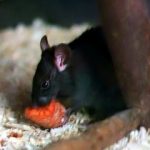
The black rat, sometimes referred to as the roof rat, is less common in the UK but still found in some coastal cities and port areas. More agile and slender than its brown cousin, it grows up to 25 cm in length but has a tail longer than its body.
The black rat is easily recognised by its pointed nose, large ears, and sleek frame. Like the brown rat, it produces 5 to 10 pups per litter, with 3 to 6 litters annually, and reaches breeding age at 10 weeks.
Unlike brown rats, black rats prefer elevated areas and are excellent climbers. They tend to avoid burrowing and are rarely seen outdoors. Instead, they nest in roofs, attics, and wall cavities, especially in buildings with poor structural maintenance.
Key Traits of Black Rat:
- Slender body and pointed nose
- Long tail and large ears
- Expert climber, prefers high places
- Eats smaller quantities than the brown rat
Image by:Liftarn
Brown Rat vs Black Rat – Why Identification Matters
Accurate identification of rat species is crucial because it influences the type of pest control treatment required. For example:
- Brown rats may require treatment in sewers, basements, or garden burrows
- Black rats are more likely to require roof and loft treatments, along with proofing entry points up high
Knowing the habits and nesting preferences of these rodents allows pest control experts to apply targeted solutions for long-term eradication and prevention.
UK Rat Feeding Habits
As omnivores, brown rats have a varied and adaptable diet, which is one of the main reasons they thrive in urban and suburban areas across the UK. These rodents are opportunistic feeders, meaning they’ll consume almost anything available to them – from kitchen scraps to animal feed.
The typical rat diet includes:
- Cereals, seeds, and grains
- Nuts and dried fruits
- Meat, eggs, and pet food
- Dairy products
Rats often find food sources both indoors and outdoors, scavenging in bins, compost heaps, cupboards, pantries, and pet bowls. This ability to eat such a wide variety of food makes them particularly difficult to deter once they’ve settled in.
Interestingly, there are a few foods rats tend to avoid, such as raw beets, raw celery, and peaches, though preferences can vary depending on what’s available in their environment.
Rat Behaviour
Rats are social creatures that live in structured colonies, often numbering in the hundreds. Their intelligence and adaptability make them particularly skilled at surviving in both rural and urban environments.
Although they occasionally enter homes, Norway rats prefer to nest outdoors, usually in underground burrows near buildings, gardens, or drains. They typically invade structures like garages, sheds, or basements in search of food, especially during the colder months.
Rats are nocturnal and tend to stay out of sight during the day. Contrary to popular belief, they are not naturally aggressive. In fact, they usually avoid human contact, choosing to flee rather than fight. However, when threatened or cornered, rats can become defensive and aggressive, especially if protecting their nests or young.
Do Rats Reproduce Quickly?
Rats reproduce rapidly. A rat litter consists of up to 24 pups, and females can become pregnant every 28 days. This rapid reproduction is one of the key reasons rat infestations can grow out of control quickly if left unaddressed.
Norway Rats’ Physical Abilities
- These rodents are more agile than many people realise:
- They can leap up to 70 cm vertically
- As excellent swimmers, they can travel long distances through water
- Norway rats have acute hearing and a highly developed sense of smell, which helps them detect changes in their environment
- Despite their heightened senses, rats are colour-blind and have poor eyesight
What Diseases do Rats Carry to Humans?
Rats are carriers of infectious diseases that can pose serious risks to humans and pets health. Rat droppings, urine and saliva can contaminate food, water supplies, and surfaces, making it easy for harmful bacteria and viruses to spread in homes, businesses, and communal areas. Some of the most well-known diseases transmitted by rats include:
- Leptospirosis (Weil’s disease)
- Rat-bite fever
- Q fever
- Typhus
These illnesses can cause severe symptoms ranging from fever and muscle pain to liver failure, respiratory issues, or even death if left untreated.
Is the Plague Still a Risk?
The plague (historically linked to rats) is not typically carried by Norway rats, the most common species in the UK. It is transmitted by infected fleas living on black rats. Although black rats have been displaced by Norway rats in the UK, they still exist in parts of continental Europe and warmer regions worldwide, presenting health risks in those areas. In addition to plague, black rats are also known to carry Hantaviruses, which can cause severe respiratory or renal syndromes in humans.
Do Rats in the UK have Rabies?
Interestingly, rats are not known carriers of rabies. Although there have been isolated cases of rats testing positive for the virus, there are no confirmed incidents of rabies being transmitted from a rat to a human. Rats are considered extremely resistant to rabies, making this one of the few major diseases that they don’t actively spread.
Property & Economic Damage Caused by Rats
Norway rats are responsible for billions in economic damage globally each year, affecting everything from agriculture to infrastructure and residential buildings. Their constant gnawing, burrowing, and nesting behaviours can lead to serious structural damage – both above and below ground.
One of the most dangerous aspects of a rat infestation is their tendency to chew through electrical wiring, insulation, and plastic piping. This not only compromises the safety of buildings but also increases the risk of electrical fires. Rats are also known to damage:
- Walls, beams, and flooring
- Flood defences and drainage systems
- Security fencing, cables, and critical infrastructure
- Bridges and road barriers, particularly in rural or semi-urban areas
- Their burrowing can weaken foundations, especially in older or poorly maintained properties.
In rural areas and farming environments, Norway rats are a major threat to food production. They feed on crops like wheat, rye, and corn, and their presence can lead to widespread contamination of harvests through urine, droppings, and nesting materials. This results in:
- Massive food spoilage
- Loss of livestock feed
- Infection of domesticated animals with rat-borne diseases
- Economic setbacks for farmers and food distributors
Even small populations can destroy tons of produce each year, making rat prevention and control critical for agricultural businesses.
How to Tell If You Have Rats
Spotting a rat infestation early is key to avoiding structural damage and potential health risks. Unlike mice, rats are larger, more cautious, and better at staying hidden – but they do leave distinctive signs behind. Knowing what to look for can help you take action quickly.
1. Chewed cables, wood, and pipes
Rats have constantly growing incisors, so they gnaw on hard materials to keep them trimmed. You may notice:
- Chewed electrical wires or cables
- Damaged skirting boards, floor joists, or plastic pipes
- Gnaw marks on furniture or packaging
This behaviour not only causes damage but also increases the risk of electrical fires.
2. Rat droppings
Rat droppings are larger than mouse droppings – typically around the size and shape of a black olive, with blunt ends. Because rats are more protective, you may not see the droppings in open spaces. If you hear noises, see chewed cables, but don’t find droppings, it’s probably rats, not mice.
3. Smear marks
Rats have poor eyesight, so they tend to follow the same paths along walls and edges. Over time, their oily fur leaves behind greasy smudge marks – known as smears on surfaces like skirting boards, pipes, or entry holes.
4. Scratching noises behind walls
Rats are excellent climbers and may nest in lofts, behind drywall, or under floorboards. If you hear scratching, scurrying, or gnawing sounds, especially at night, it’s a strong sign of rat activity.
5. Footprints and tail marks
In dusty environments like basements, attics, or garages, you might spot small footprints or tail drag marks between the prints. You can confirm activity by placing a light dusting of flour or talcum powder overnight and checking for rat tracks the next morning.
What to Do in Case of a Rat Infestation
Dealing with a rat infestation goes beyond simply eliminating the current population. Long-term success depends on eliminating entry points and making your home unwelcoming to rodents.
Whether you’re dealing with a minor infestation or suspecting hidden activity, the best approach combines targeted rat removal methods with preventative measures like sealing entry points and eliminating food sources. While traps and poison can help, professional rat control services offer lasting protection and peace of mind. Don’t wait until the damage is done – take control today and keep your home rat-free, safe, and secure.
Looking for professional rat control?
We only aim to provide some useful facts about rats. Anyway ,we don’t provide any medical advice.



